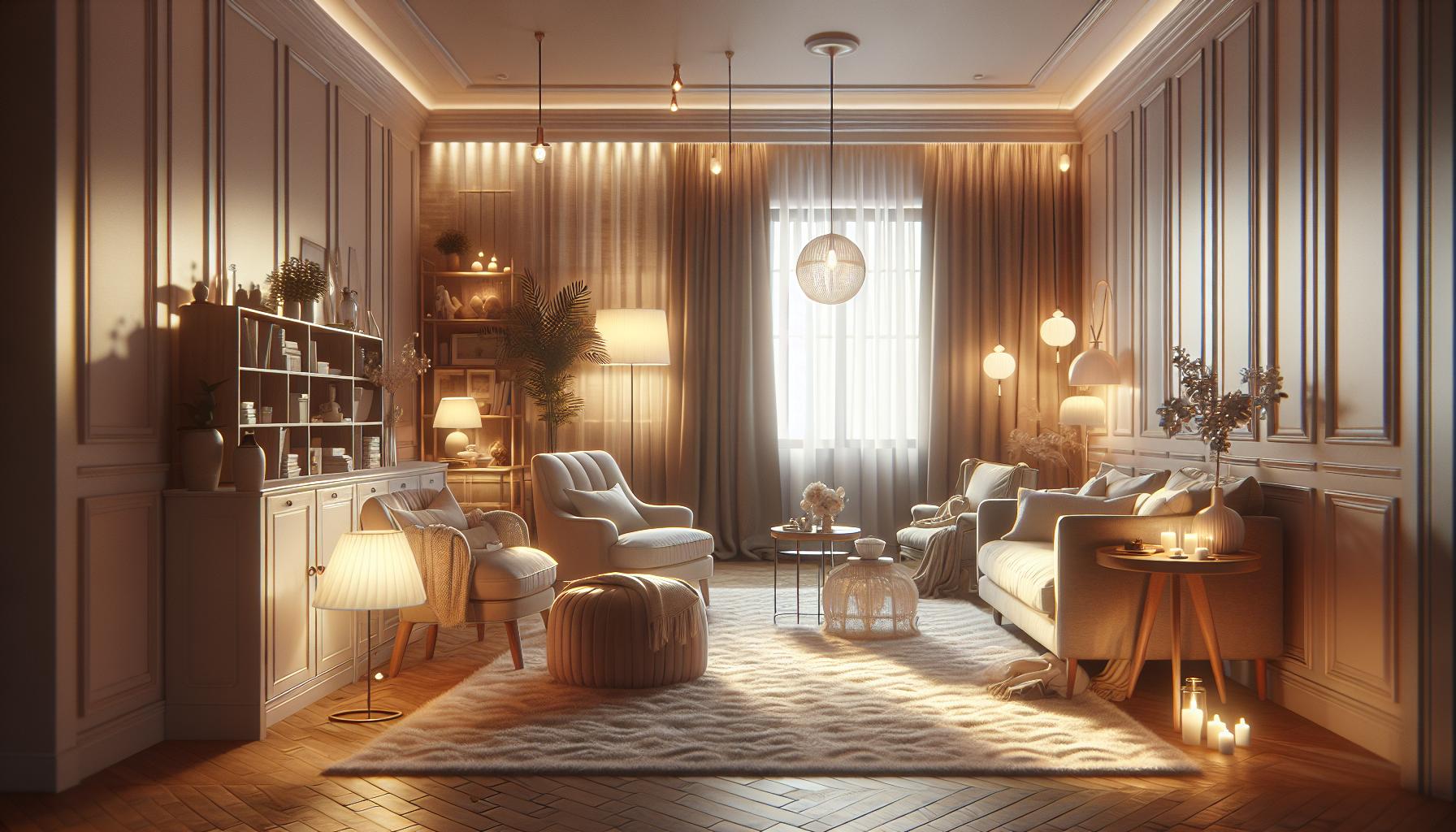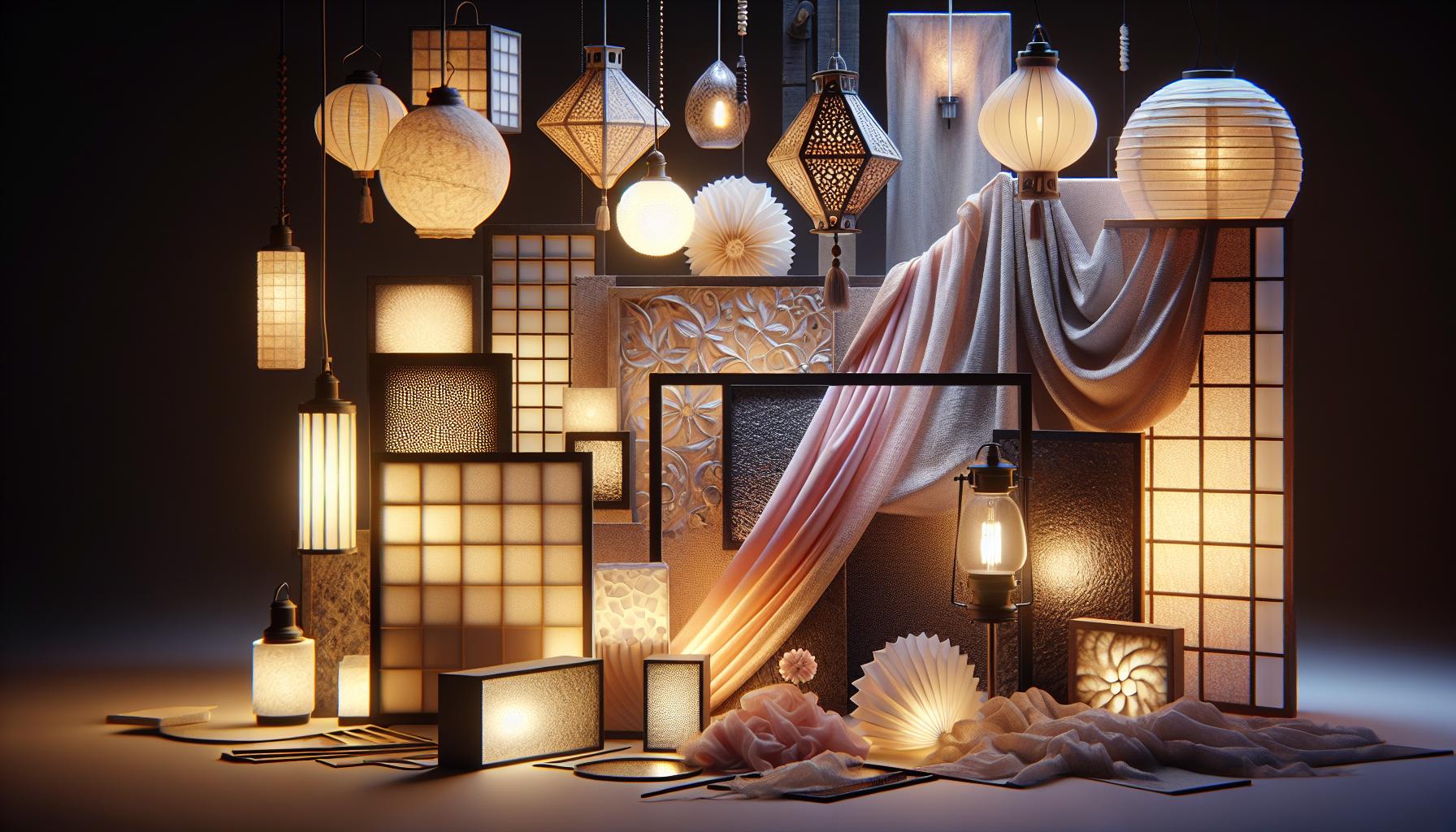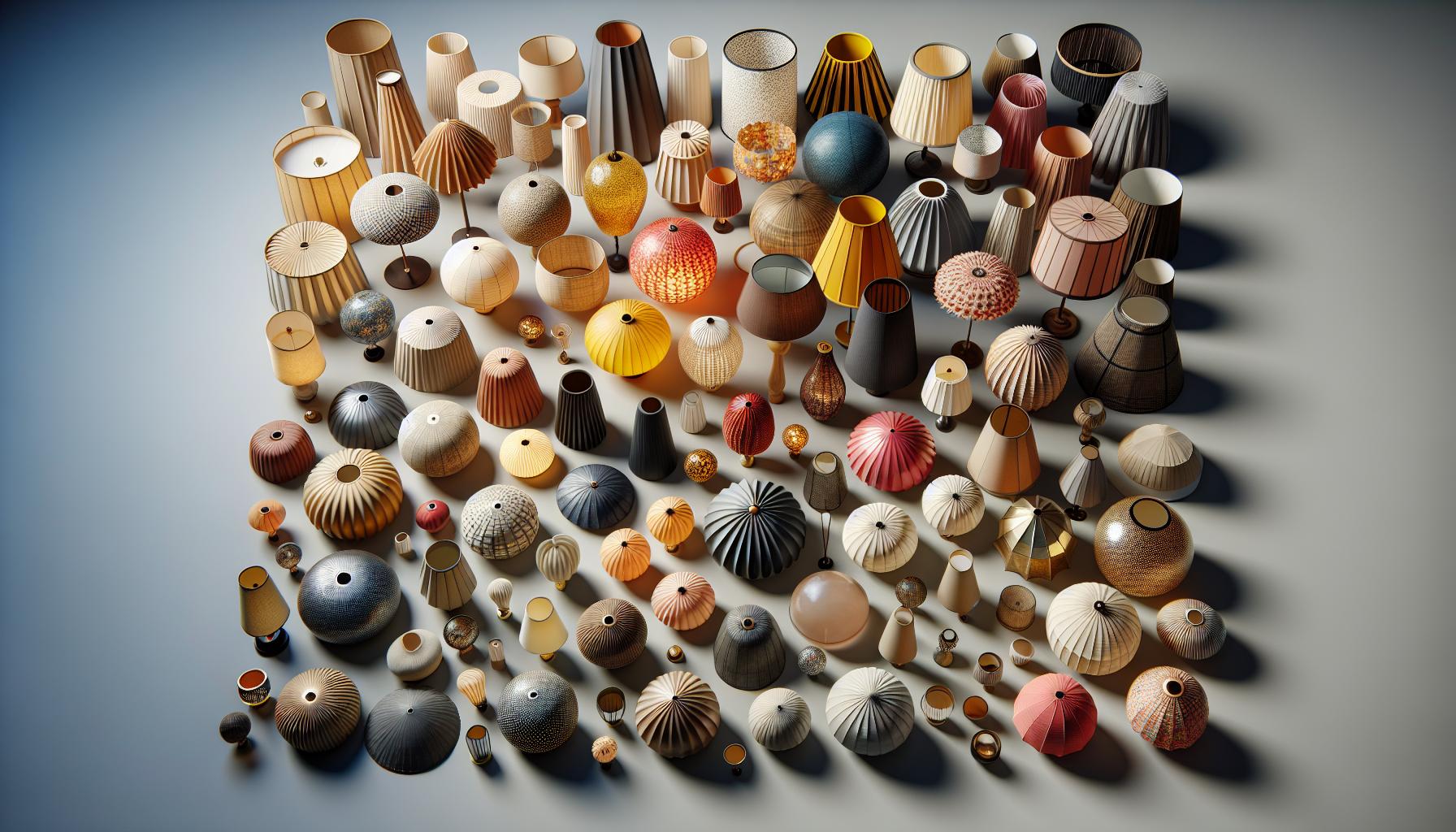Ever walked into a room and felt like the light was just too harsh? You’re not alone. Bright, unfiltered light can be glaring and uncomfortable, but there’s a simple fix: diffusing your light bulbs. This nifty trick softens the light, spreading it evenly throughout the space and creating a cozy, welcoming atmosphere.
So, if you’re ready to banish those harsh shadows and give your room a warm glow, you’re in the right place. Learning how to diffuse a light bulb is easier than you might think, and you don’t need any fancy equipment to get started. Let’s dive into the world of softer lighting and transform your space with just a few simple steps.
What is light diffusion?
Ever walked into a room and felt the light was just too harsh on your eyes? It’s not just you—it’s science. When light emits from a source, it travels in straight lines and, without any interruption, can create stark shadows and bright spots that are anything but comfortable. Here’s where light diffusion saves the day.
Light diffusion occurs when the direct path of light is scattered, spreading it more evenly throughout a space. Imagine it as a gentle way to tame the wild rays of a bulb, much like a soft breeze that disperses leaves uniformly across your yard. This scattering effect can be achieved through various materials and techniques, which we’ll delve into.
But first, let’s talk about why diffusing light is so crucial for creating the perfect ambiance. Direct light can cause glare, and that’s a big no-no for your cozy reading nook or your meticulously designed living room. It’s all about achieving a balance where light enhances your space without dominating it. Think soft, warm, and inviting—the kind of lighting that makes guests feel at home.
The good news is, you don’t have to be a professional to master the art of light diffusion. With a few simple tweaks and the right materials, you can transform your space. Let’s explore how materials like frosted glass, lampshades, and diffuser panels do the trick:
- Frosted glass creates a matte finish on your bulbs or fixtures, distributing light evenly and softening the overall effect.
- Lampshades redirect and diffuse light, adding style and function to your lamps.
- Diffuser panels, often found in office settings, spread light across a broader area, reducing glare and softening the light.
By incorporating these elements into your lighting setup, you can strike the ideal balance between function and aesthetics, ensuring your light is just right for every moment. Whether you’re setting up for a movie night or illuminating a workspace, proper light diffusion can change the game.
Why should you diffuse your light bulbs?
Diffusing light bulbs isn’t just about aesthetics; it’s a game-changer for enhancing the comfort and ambiance of your home. When you soften the glare of a bulb, you’re taking the edge off the harshness that can strain your eyes. Soft, diffused light is easier on the eyes and helps prevent headaches and eye fatigue, especially in spaces where you spend a lot of time reading or working.
But there’s more to light diffusion than comfort. It’s also about control. Have you ever stepped into a room and felt instantly at ease because the lighting was just right? That’s controlled illumination at play. By diffusing light, you’re able to shape and direct the light in your environment, creating pockets of warmth and highlighting areas you want to accentuate. This selective visibility can be particularly useful when you’re keen on creating focal points in your rooms or showcasing art and décor pieces.
Energy efficiency is another compelling reason to diffuse your light bulbs. When light is scattered evenly, you’re less likely to need additional light sources to brighten up dark corners. This can potentially lead to a reduction in energy consumption and, consequently, smaller utility bills. It’s a simple step toward eco-friendliness that can also save you some green.
Furthermore, diffusing light can elevate the mood and set the right ambiance for every occasion. Imagine dimming the lights and enjoying a movie night; the diffused light won’t distract or create reflections on your screen. Hosting a dinner party? Soft lighting can make your guests feel more relaxed and comfortable, turning a simple meal into a memorable gathering.
It’s clear that diffusing your light bulbs is about more than preventing glare – it’s about creating an atmosphere that you love, without breaking the bank or sacrificing comfort. With these insights, you’ll be well on your way to illuminating your home in the most beautiful and practical way possible.
Different methods for diffusing light bulbs
« How Many Light Bulbs Are There in the United States? Shocking Numbers Revealed
How Are Light Bulbs Rated? Unlocking Lumens, Efficiency, and Lifespan »
When you’re looking to cast that perfect glow, knowing how to diffuse your light bulbs is key. Lighting can make or break the mood of a space, and with a few expert DIY tips, you’ll be setting the ambiance like a pro.
Fabric Diffusers: One of the most accessible and creative methods is to use fabric. By stretching a piece of light-colored, translucent fabric over a frame and placing it in front of your light source, you transform harsh beams into a soft haze. The fabric’s density will determine the level of diffusion, so experiment with different materials to find your perfect match.
Paper Lanterns: Another popular option is utilizing paper lanterns. They’re not just for parties; when fitted over bulbs, these lanterns can produce a gentle light that radiates warmth and comfort in your home. Plus, they come in various shapes and sizes, giving you plenty of design flexibility.
DIY Diffuser Panels: For those who love a good crafting session, making your own diffuser panels can be both rewarding and effective. Materials like wax paper or a frosted vinyl cover applied to a clear plastic sheet can soften the light to your taste. Cut the materials to size, and fix them securely over the existing light fixture.
Sandblasted Glass Shades: If you’re looking for a more permanent solution, opt for sandblasted glass shades. The rough surface of the glass scatters the light exquisitely, giving off a dreamy, ethereal quality that’s hard to achieve with any other material.
Professional Diffuser Bulbs: Let’s not forget that the market offers specialized diffuser bulbs designed to spread light evenly with minimal effort. These bulbs usually have a frosted exterior or contain built-in diffusing elements. They’re ideal for those who prefer not to tinker too much but still want a beautifully diffused light source.
Embracing these light diffusing methods will guide you on your journey to create the perfect ambiance. Whether it’s for a romantic dinner, a relaxed evening, or a productive workspace, you’ll find that diffusing light bulbs can profoundly impact the feel of a room.
Using lampshades to diffuse light
When you look into redecorating or simply updating the ambiance of your room, the choice of lampshade is key to diffusing light effectively. Lampshades are pivotal in not just directing light but also in determining the intensity and softness of the illumination in your space.
Your primary consideration should be the material of the lampshade. Fabrics like cotton, linen, and silk can cast a gentle glow, ideal for living rooms or bedrooms where you want to relax. On the other hand, parchment or heavy paper shades can offer a more focused light, perfect for reading nooks or study areas.
Here are some pointers to get you started:
- Select the Right Shape: Drum, empire, and bell-shaped shades all diffuse light differently. Drums are modern with a wide throw of light, while empire shades are classic, focusing light downwards. Don’t overlook bell-shaped shades for a touch of elegance and a balanced spread of light.
- Color Matters: White and lighter colors reflect light, brightening a room, while darker hues create a moody atmosphere. It’s not just aesthetics; it’s functional design.
- Translucency: A translucent lampshade can soften the light bulb’s glare without diminishing the light’s effectiveness, making it a perfect blend of functionality and style.
Thinking outside the classic lampshade box, you can explore textured or pleated lampshades for a unique diffusion effect. Textures can create intriguing patterns on your walls, and pleats manipulate light in soft, ribbon-like waves across your space.
For the avid DIY enthusiast, consider embellishing plain lampshades with stencils or fabric for a personalized touch. Or, try layering multiple shades to adjust the diffusion intensity.
Remember, the goal is to achieve a flattering diffusion that complements your practical needs and aesthetic desires. By considering these elements, your lampshade choice can do more than light a room—it can elevate it.
Using fabric or paper to diffuse light
You’ve discovered that light diffusers can dramatically change the ambiance of a room. What’s more, you don’t have to break the bank to create that serene glow you’re after. Let’s explore some nifty ways you can use fabric or paper to diffuse light, giving your space a touch of softness and warmth.
Fabrics with a certain degree of transparency are ideal for light diffusion. You could drape a sheer scarf over a lampshade or secure it around a hanging bulb. Be sure to keep the fabric at a safe distance from the bulb to avoid any fire hazards. Light-colored fabrics work best as they do not alter the hue of the light too much, allowing for a pure diffusion effect.
As for paper, options abound. From rice paper to vellum, the variety of textures and colors allows for endless creativity. Consider wrapping your lampshade in a layer of parchment paper for a cozy, muted effect. Using paper creates an opaque diffusion, which can help in areas where you want to reduce the sharpness of undiffused light. Always select heat-resistant paper and adhere to safety precautions.
Here are a few tips for using fabric and paper:
- Use LED bulbs as they emit less heat, reducing the risk of fire.
- Secure the material so it won’t come into direct contact with the bulb.
- Experiment with different textures until you find one that casts the perfect glow.
Not only are these materials cost-effective, but they also allow for a Personal Touch in your lighting design. Whether you’re hosting a dinner, relaxing in your reading nook, or seeking to create a tranquil bedroom retreat, you’ll find that a little ingenuity goes a long way.
The wonderful thing about using fabric and paper is the Capacity for Customization. With every fold, cut, and drape, you’re crafting an original piece of functional art. So dive into your DIY spirit and let your creativity shine—both figuratively and literally.
Other creative ways to diffuse light bulbs
When you’ve experimented with fabrics and papers, you might find yourself itching for more inventive methods to diffuse light in your home. Exploring unique materials offers a refreshing twist on the traditional, creating unmistakable ambiance and personality in each corner of your space.
One such method is to utilize frosted adhesive paper. This easily accessible material can be cut to size and directly applied to your light bulb covers, creating a matte finish that diffuses the light beautifully. A benefit of this approach is its reversibility; you can remove or replace it without hassle.
Another option involves recycling translucent materials, like frosted wine bottles or glass jars, as unconventional lampshades. Placing these over your bulbs casts a gentle glow that’s both chic and eco-friendly. You’ll want to ensure proper ventilation for the bulbs to avoid overheating.
Rice paper is another affordable and versatile material. Originating from traditional Asian lanterns, rice paper can be attached around a frame to construct a delicate, diffused light source. Its subtle texture contributes to a serene atmosphere. Keep in light that rice paper is delicate; you’ll need to handle it carefully during the crafting process.
If you’re someone who enjoys technology and innovation, LED strip lights with adjustable color temperatures and brightness levels are a modern solution. Installing these strips along the edges of your room can offer a continuous and soft light without the need for traditional lamp shades at all.
Lastly, shadow casting can elevate your lighting game. Metal or wooden cutouts placed in front of bulbs can cast whimsical or dramatic shadows, adding depth and interest to your lighting. It’s perfect for creating a dynamic backdrop in any room.
Diving into these creative territories not only brightens your living space but also fuels your love for home DIY projects. Feel free to mix and match these suggestions – after all, your home’s lighting should be as unique as your imagination.
Conclusion
You’ve got all the creative tools you need to diffuse light bulbs and transform your space into a cozy haven. Whether you choose to wrap a bulb in fabric, hang a charming paper lantern, or craft a unique lampshade from recycled materials, your lighting can be as original as you are. Don’t be afraid to mix and match techniques or to play with different textures and colors. After all, the perfect ambiance is in your hands. So go ahead, experiment, and watch as your rooms glow with that soft, inviting light you’ve always wanted.
Frequently Asked Questions
What are some methods to diffuse a light bulb?
You can diffuse a light bulb through various materials such as fabric, paper lanterns, DIY diffuser panels, sandblasted glass shades, and professional diffuser bulbs. Alternative creative options include frosted adhesive paper, reused translucent materials (like frosted bottles or jars), rice paper constructions, and metal or wooden cutouts for shadow effects.
Can you use fabric to diffuse light?
Yes, fabric can be used as a light diffuser. Ensure the fabric is flame-retardant or positioned safely away from the bulb to avoid fire hazards.
Are paper lanterns effective light diffusers?
Paper lanterns are an effective and simple way to diffuse light. They provide a soft, even light and can add a decorative touch to any room.
Can you create a DIY light diffuser panel?
DIY diffuser panels can be created using materials like translucent acrylic sheets, wax paper, or even a stretched white t-shirt. They help soften and spread the light more evenly.
What is the purpose of using sandblasted glass shades?
Sandblasted glass shades are used to create a matte finish that diffuses the light, reducing glare and softening the light’s intensity for a more pleasant ambiance.
Are there professional diffuser bulbs available?
Yes, there are professional diffuser bulbs specifically designed to spread light more evenly, often featuring frosted or soft-glow finishes to enhance light diffusion.
How can LED strip lights be customized for diffusion?
LED strip lights can be customized by adjusting their color temperatures and brightness levels. They can also be housed within diffusing materials to tailor the lighting effect to your preferences.
What role do metal or wooden cutouts play in light diffusion?
Metal or wooden cutouts can be used to create specific patterns or shadows on the walls, adding artistic effects rather than diffusing the light evenly. They offer unique customization for your lighting design.




